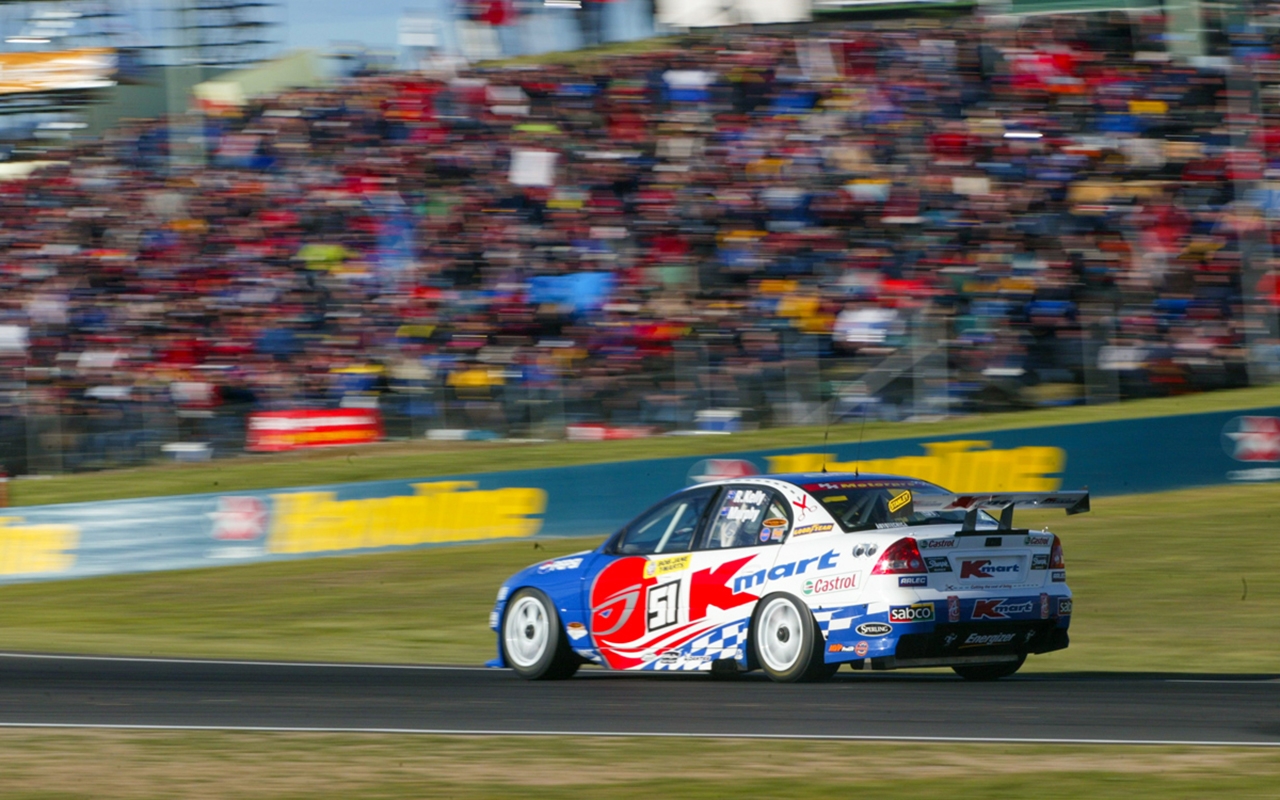20 years on: The lap that moved a Mountain
20 years since Murphy's 2:06.8594s, dubbed 'Lap of the Gods'
Murphy and Kelly won the 2003 and 2004 races
It took seven years for Murphy's lap to be beaten
The Top Ten Shootout has been a key part of the Bathurst 1000 weekend for 45 years, adding a string of unforgettable moments to the Great Race story.
But only once has the Saturday session provided something so mighty that it towers over the events of the race that followed.
That, of course, is Greg Murphy’s much-trumpeted ‘Lap of the Gods’, for which 20-year celebrations sit within the Great Race’s own 60th anniversary milestone this year.
Most fans will remember exactly where they were when Murphy set his stunning 2:06.8594s lap, while many have watched it back innumerable times thanks to YouTube and social media.
The record was finally broken in 2010 and countless drivers have gone faster since. Even Murphy himself easily undercut the figure when returning for a wildcard 12 months ago.
But that’s not the point.
It was the shock of the moment – and the reaction from pitlane upon the #51 Commodore’s return – that makes the Lap of the Gods timeless.
Murphy’s speed that day surprised not only his rivals and the watching fans, but the Kiwi and his Kmart Racing team too.
He had set the pace all week at Bathurst, topping practice on Thursday with 2:08.3282s, before lowering that to 2:07.9503s in a thrilling battle with Mark Skaife and John Bowe in Friday qualifying.
Bowe recorded 2:07.9556s in the Shootout before Skaife failed to fire, which left Holden’s hopes resting squarely on Murphy.
Car #51’s engineer Erik Pender stood at the pit wall to watch Murphy start the lap, before scurrying into the garage to take his spot in front of the monitors.
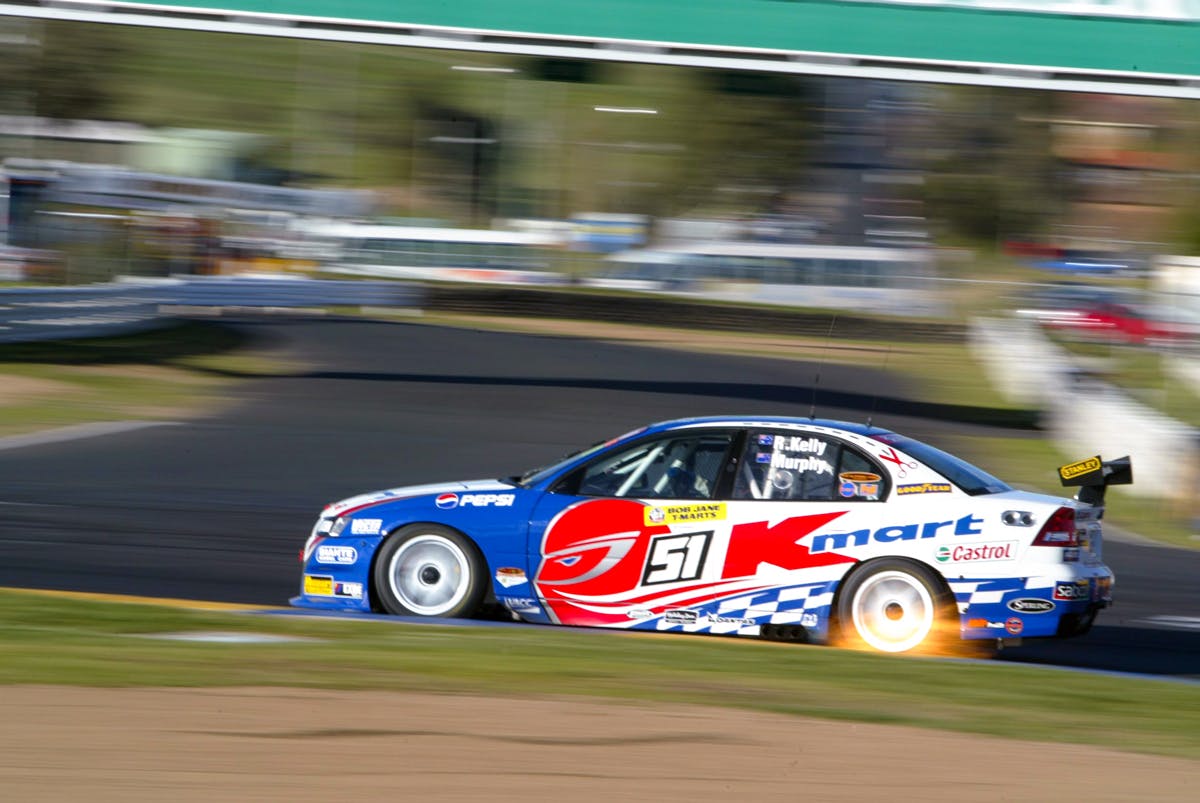
Murphy had been doing his best times on the second-lap during the earlier sessions, and Pender was not confident of pole.
“He went through Griffins Bend and went a bit wide, and I looked at Rick (Kelly, co-driver) and went ‘I don’t think the tyres are quite up yet’,” recalled Pender a year later.
“And then the same at The Cutting, he had a bit of a wobble, and I thought ‘it will probably be a quick lap, but not quite fast enough’.
“And then he hit the first split and it was like ‘Jesus Christ’!”
Murphy’s first split time, clocked at Reid Park, was a whopping 0.4005s quicker than Bowe’s.
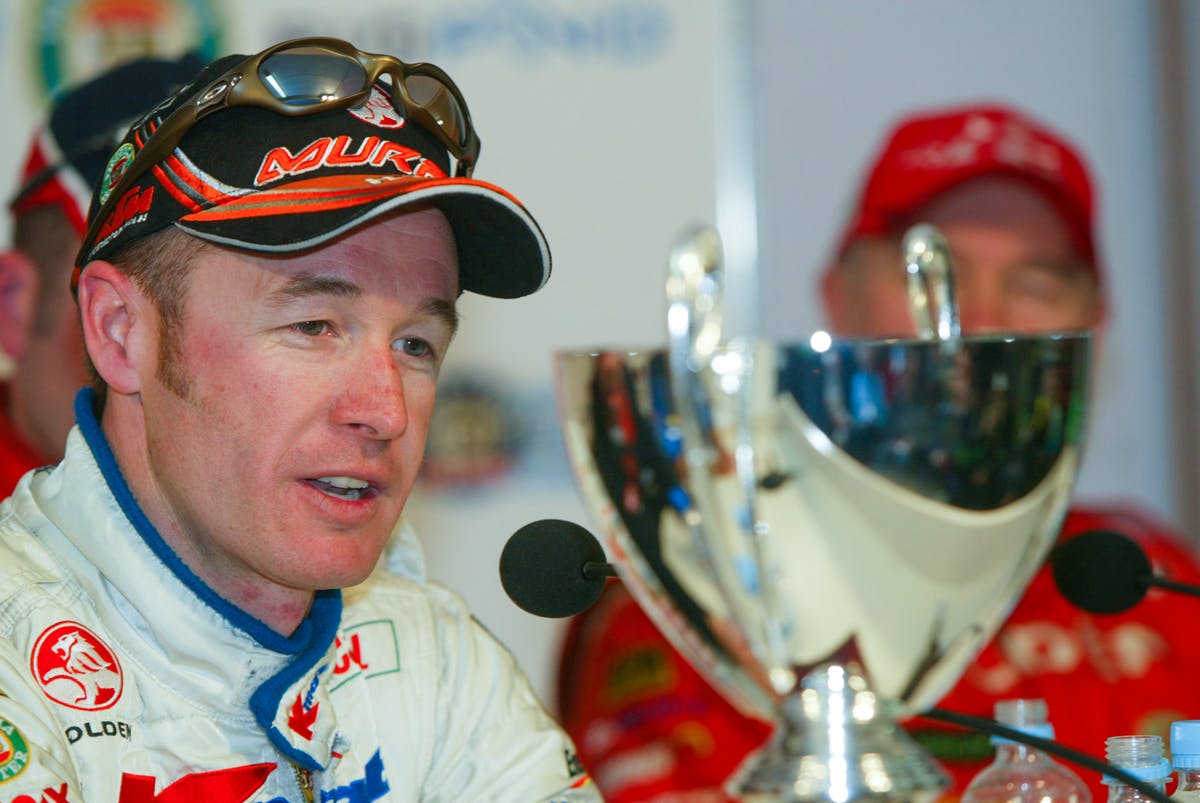
The car’s body language during those opening corners was not a sign of poor tyre temperature, but just how much Murphy was asking of it.
At the time, only the driver knew how much grip it had, and how many extra revs he was hauling between the bends.
But as a driver who disliked the distraction of running a datum lap time on the dashboard, Murphy was not aware of how good the splits were looking.
As the Commodore fired out of Forrest’s Elbow and onto Conrod Straight, the end of the second sector revealed Murphy to be 0.6944s clear of Bowe.
Now back in the Brad Jones Racing garage watching the television screen, the Ford legend could only shake his head and laugh.
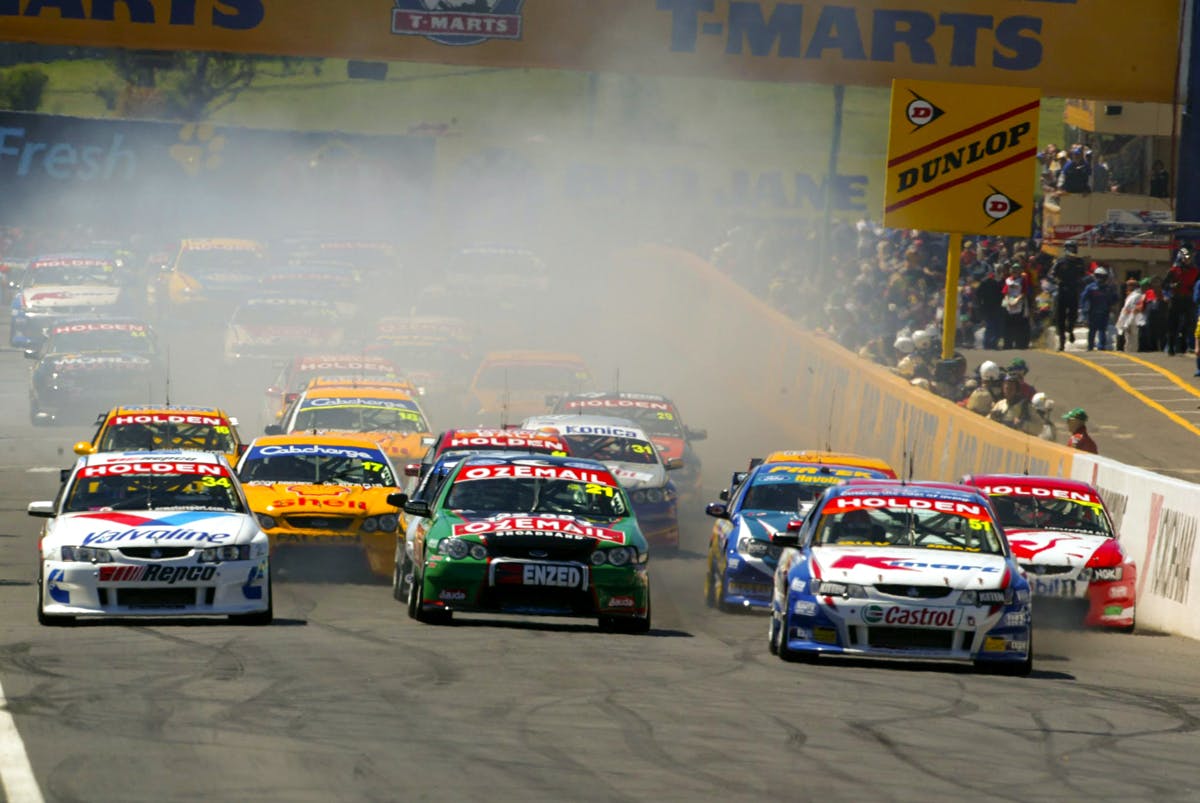
Murphy meanwhile was fearing he’d botched it, thanks to a fumble with the H-pattern gearshift at the exit of The Dipper.
“I went to do the 2-3 shift and I got first,” Murphy explained.
“It went to about 9400rpm! I thought I’d blown it for a second, but the brain kicked in and told me that I had lost time in a section where it was only 100 metres to the next braking point.”
He needn’t have worried. Murphy nailed the last two braking areas to complete the lap, before the time flashed up on his dash and sensory overload took hold.
As his brain tried to make sense of the numbers his eyes were seeing, the radio lit up with Pender’s voice, somewhat drowned out by the screams of his crew in the background.
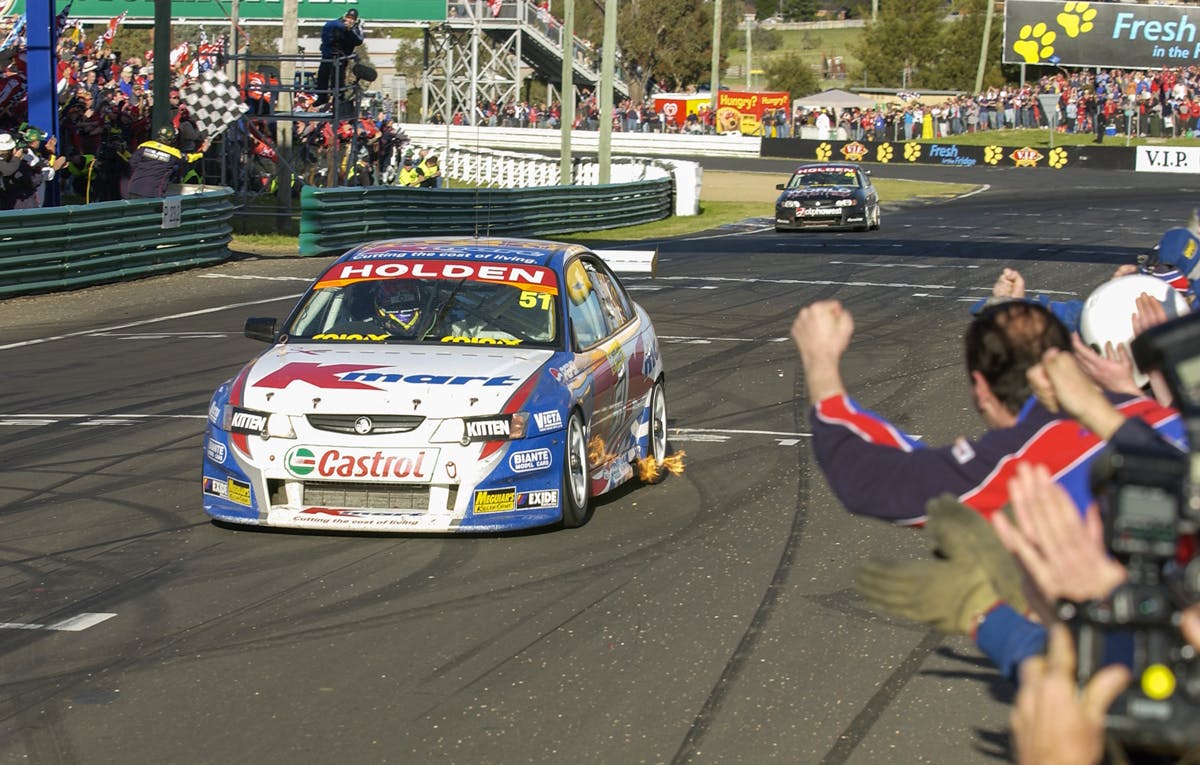
Even television commentator Neil Crompton was struggling to put the achievement into words on the broadcast, exclaiming “holy smokes” twice in short order as the pictures told the story.
Murphy’s lap had been 1.096s quicker than that of Bowe, who later suggested his rival deserved a knighthood for the performance!
As Murphy turned made the then-traditional drive the wrong way up pitlane after the lap, rival team members began emerging from their garages to applaud the Kiwi as he drove by.
“I have never felt anything like I did when I came back into pitlane,” Murphy later reflected.
“It was ‘holy shit, what have I done?’. You rarely get an accolade like that, it still sends shivers down my spine.”
Jubilation in the Kmart garage was eventually quelled by team manager Rob Crawford, who reminded his troops that they had a race to win on Sunday.
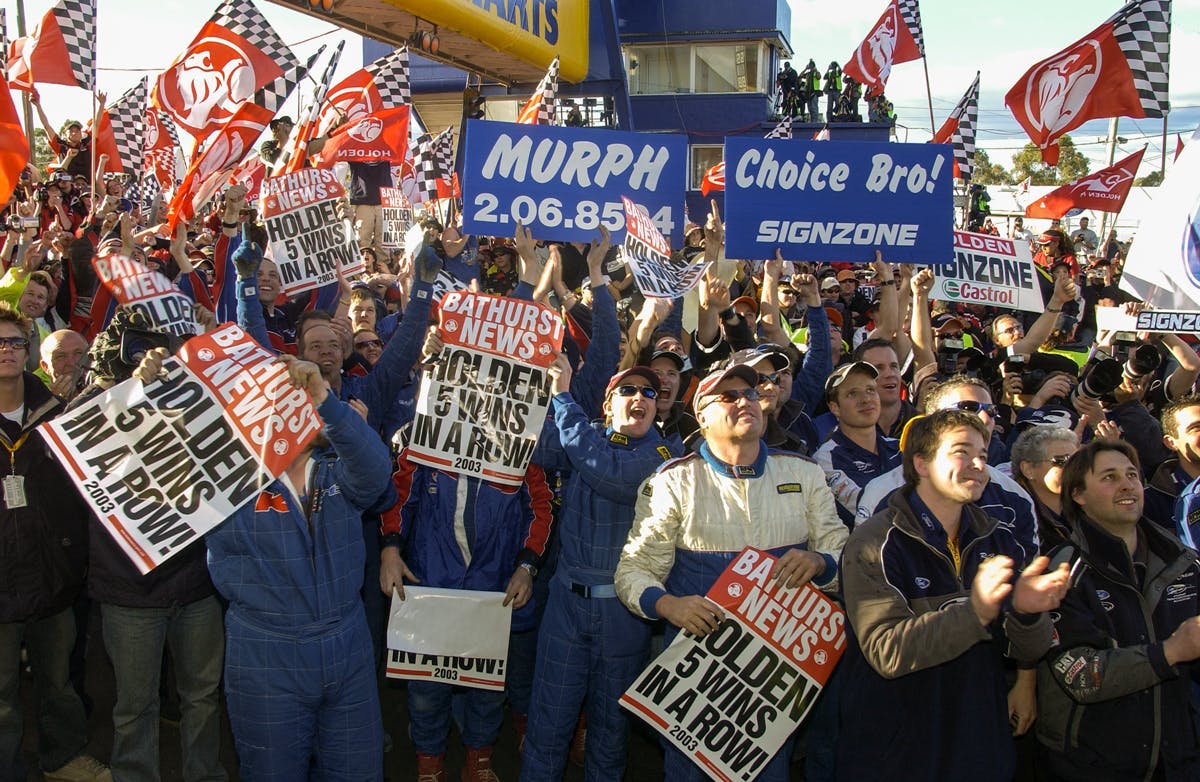
For the Kmart team, 2003 was about avenging the pain of 12 months earlier, when a five-minute penalty for a bungled refuelling stop scuppered a potential victory.
Just as a forward taking a spectacular hanger at the footy can only truly be completed with a goal, Murphy, Kelly and the Kmart crew executed Sunday’s race perfectly.
Murphy didn’t fight for track position early. They stuck to a four-stop strategy when others ducked in under an early Safety Car. And when prompted, co-driver Kelly upped his conservative pace.
The end result was a dominant victory as Murphy led home the Ford Performance Racing Falcon of Craig Lowndes and Glenn Seton by a fraction under five seconds.
It was a tremendously satisfying win for a squad set up less than three years earlier as the Holden Racing Team’s ‘B-team’, and with a co-driver in Kelly who became the youngest-ever Bathurst winner.
But the race itself sits in the shadow of the Lap of the Gods, which forever cemented Murphy’s status as an all-time Bathurst legend.
